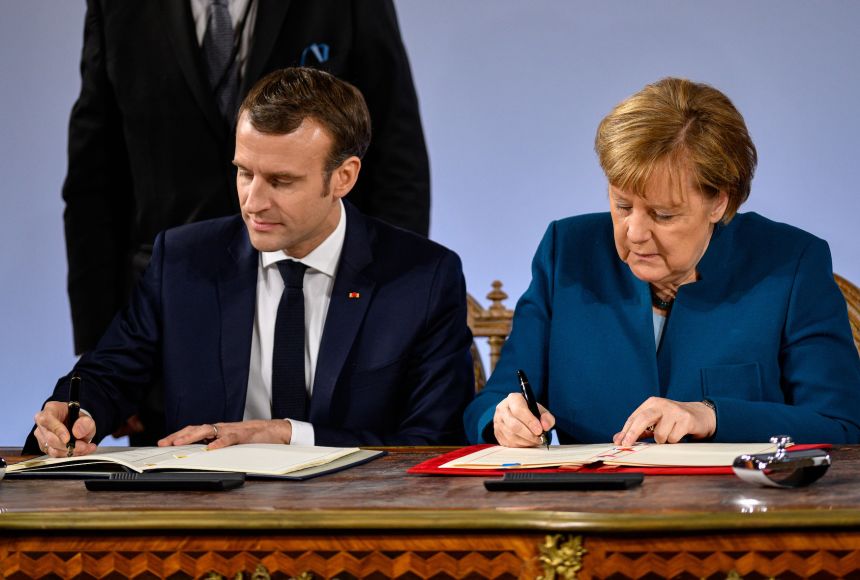
Treaties are agreements among and between nations. Treaties have been used to end wars, settle land disputes, and even estabilish new countries.
Social Studies, Civics
German Chancellor Angela Merkel and French President Emmanuel Macron sign the Aachen Treaty on January 22, 2019 in Aachen, Germany. It is an example of a bilateral treaty.
Photograph by Sascha Schuermann/Getty Images

Treaties are agreements between nations. They can be bilateral , between two nations, or multilateral, among several nations. Key aspects of treaties are that they are binding (meanning, there are legal consequences to breaking them) and become part of international law. Much of modern international treaty law is defined by the Vienna Convention on the Law of Treaties.
Although a treaty may take any form, typically, they include a preamble, or statement of purpose; a set of articles defining responsibilities and obligations; expiration time (or terms for termination); reservations or exclusions (if any); and, particularly in the case of multilateral treaties, when and how it will come into effect.
The preamble defines the treaty ’s context and objectives.
The terms may be whatever the parties to the treaty want, but they may not be in conflict with a “norm of international law.”
A treaty may be terminated according to its own terms or with the consent of all parties.
A state may enter into a treaty but make “ reservations ,” that is, a statement whereby it means to exclude itself from, or modify terms of the agreement. The treaty itself may forbid or allow this and, in any case, the reservation must not be incompatible with the object and purpose of the treaty .
A treaty generally comes into effect when all parties agree, but the treaty may also define a time or a number of signatories needed before it comes into effect.
In the United States, the term “ treaty ” differs from international law. Article II, Section 2 of the Constitution provides the president has the power to make treaties, by and with the advice and consent of the Senate, provided two-thirds of the Senate agrees. Under the Supremacy Clause, these treaties, along with federal statutes and the Constitution itself, are the “supreme law of the land.” If an agreement has been signed but not ratified by Congress, it may be considered a treaty under international law, but not under U.S. law. This type of agreement is usually referred to as an executive agreement.
Even if a treaty has been ratified by Congress, however, it is not necessarily binding federal law. There are two types of treaty . One is legally binding unto itself, or "self-executing," as defined by the U.S. Supreme Court. Non-self-executing treaties need domestic legislation to work.